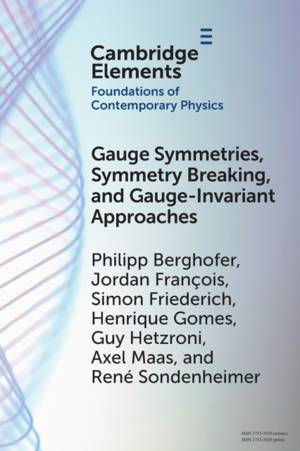
- Afhalen na 1 uur in een winkel met voorraad
- Gratis thuislevering in België vanaf € 30
- Ruim aanbod met 7 miljoen producten
- Afhalen na 1 uur in een winkel met voorraad
- Gratis thuislevering in België vanaf € 30
- Ruim aanbod met 7 miljoen producten
Zoeken
Gauge Symmetries, Symmetry Breaking, and Gauge-Invariant Approaches
Philipp Berghofer, Jordan François, Simon Friederich
€ 31,95
+ 63 punten
Omschrijving
Gauge symmetries play a central role, both in the mathematical foundations as well as the conceptual construction of modern (particle) physics theories. However, it is yet unclear whether they form a necessary component of theories, or whether they can be eliminated. It is also unclear whether they are merely an auxiliary tool to simplify (and possibly localize) calculations or whether they contain independent information. Therefore their status, both in physics and philosophy of physics, remains to be fully clarified. This Element reviews the current state of affairs on both the philosophy and the physics side. In particular, it focuses on the circumstances in which the restriction of gauge theories to gauge invariant information on an observable level is warranted, using the Brout-Englert-Higgs theory as an example of particular current importance. Finally, the authors determine a set of yet to be answered questions to clarify the status of gauge symmetries.
Specificaties
Betrokkenen
- Auteur(s):
- Uitgeverij:
Inhoud
- Aantal bladzijden:
- 124
- Taal:
- Engels
- Reeks:
Eigenschappen
- Productcode (EAN):
- 9781009197229
- Verschijningsdatum:
- 3/08/2023
- Uitvoering:
- Paperback
- Formaat:
- Trade paperback (VS)
- Afmetingen:
- 152 mm x 229 mm
- Gewicht:
- 176 g

Alleen bij Standaard Boekhandel
+ 63 punten op je klantenkaart van Standaard Boekhandel
Beoordelingen
We publiceren alleen reviews die voldoen aan de voorwaarden voor reviews. Bekijk onze voorwaarden voor reviews.











